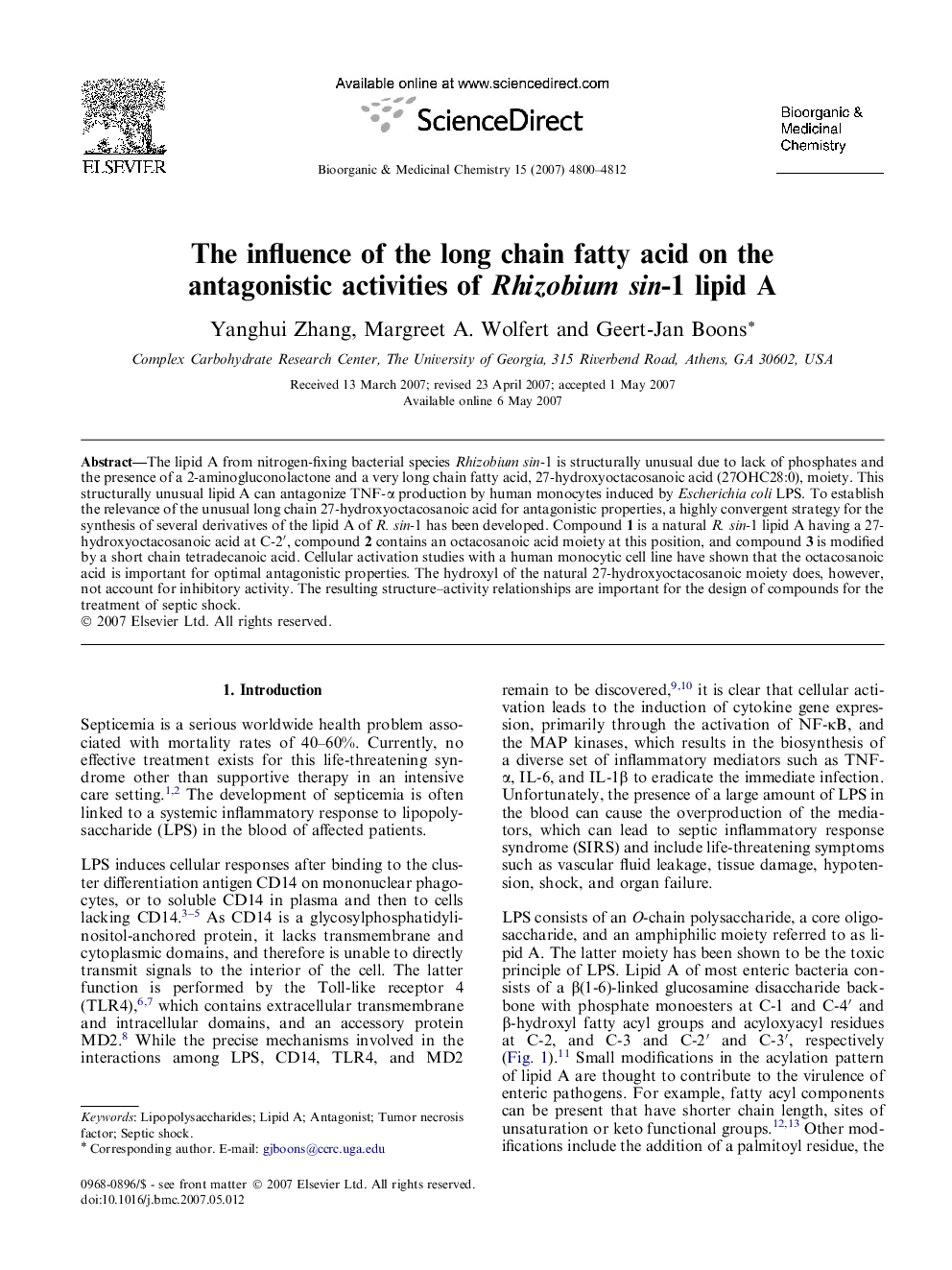| کد مقاله | کد نشریه | سال انتشار | مقاله انگلیسی | نسخه تمام متن |
|---|---|---|---|---|
| 1356901 | 981173 | 2007 | 13 صفحه PDF | دانلود رایگان |

The lipid A from nitrogen-fixing bacterial species Rhizobium sin-1 is structurally unusual due to lack of phosphates and the presence of a 2-aminogluconolactone and a very long chain fatty acid, 27-hydroxyoctacosanoic acid (27OHC28:0), moiety. This structurally unusual lipid A can antagonize TNF-α production by human monocytes induced by Escherichia coli LPS. To establish the relevance of the unusual long chain 27-hydroxyoctacosanoic acid for antagonistic properties, a highly convergent strategy for the synthesis of several derivatives of the lipid A of R. sin-1 has been developed. Compound 1 is a natural R. sin-1 lipid A having a 27-hydroxyoctacosanoic acid at C-2′, compound 2 contains an octacosanoic acid moiety at this position, and compound 3 is modified by a short chain tetradecanoic acid. Cellular activation studies with a human monocytic cell line have shown that the octacosanoic acid is important for optimal antagonistic properties. The hydroxyl of the natural 27-hydroxyoctacosanoic moiety does, however, not account for inhibitory activity. The resulting structure–activity relationships are important for the design of compounds for the treatment of septic shock.
Synthesis of Rhizobium sin-1 lipid A analogues and evaluation of their ability to antagonize the production of TNF-α by human monocytic cells induced by enteric LPS are described.Figure optionsDownload as PowerPoint slide
Journal: Bioorganic & Medicinal Chemistry - Volume 15, Issue 14, 15 July 2007, Pages 4800–4812